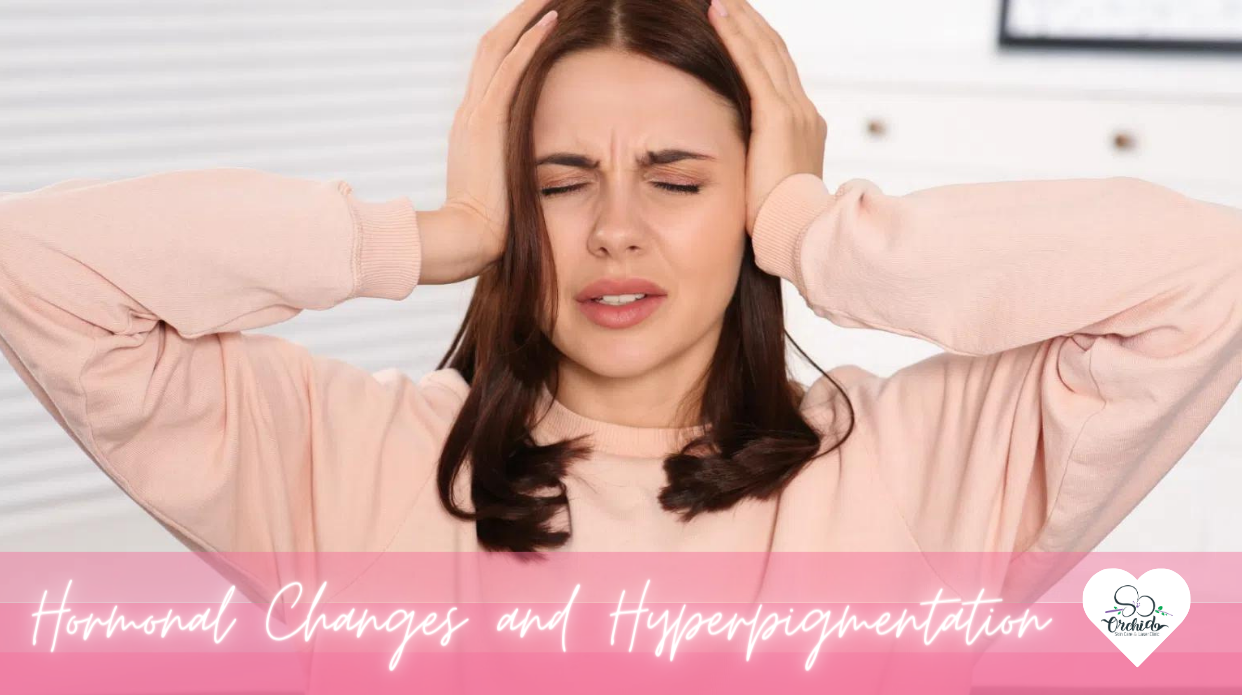Understanding Hormonal Changes and Hyperpigmentation
The human skin, a reflection of internal changes, often manifests various conditions as a direct consequence of hormonal fluctuations. Among these conditions, hyperpigmentation stands out for its prevalence and impact on individuals, especially during significant hormonal milestones such as pregnancy and menopause. This blog post delves into the intricate relationship between hormonal changes and hyperpigmentation, exploring the underlying causes, affected life stages, and effective management strategies. By understanding these dynamics, individuals can better navigate the challenges of hyperpigmentation through various phases of life, from pregnancy and menopause to broader hormonal fluctuations.
Overview of Hormonal Changes and Their Impact on Skin Health
Hormones, the body’s chemical messengers, play pivotal roles in regulating various physiological processes, including skin health. Fluctuations in hormone levels, whether due to natural life stages, medical conditions, or treatments, can significantly influence the skin’s appearance and health. Estrogen and progesterone, in particular, have profound effects on skin elasticity, moisture, and pigmentation. These hormonal changes can lead to conditions such as hyperpigmentation, where patches of skin become darker than surrounding areas, creating an uneven skin tone.
Brief Introduction to Hyperpigmentation and Its Connection with Hormonal Fluctuations
Hyperpigmentation, characterized by darkened patches or spots on the skin, results from excess melanin production or distribution. Hormonal fluctuations, especially those involving estrogen and progesterone, can trigger or exacerbate hyperpigmentation. Hormonal Changes and Hyperpigmentation are evident in conditions like melasma, which commonly occurs during pregnancy, termed the “mask of pregnancy,” and can also be influenced by hormonal treatments and menopause. Understanding the science behind hyperpigmentation and its hormonal triggers is essential for effective prevention and treatment.
The Science Behind Hyperpigmentation
-
What is Hyperpigmentation?
Hyperpigmentation encompasses several conditions where certain skin areas become darker than the normal surrounding tissue. This can occur in small patches, cover large areas, or affect the entire body. The primary types include melasma, sunspots (also known as age spots or liver spots), and post-inflammatory hyperpigmentation (PIH). While hyperpigmentation is typically harmless, it can cause significant cosmetic concern for those affected.
-
Causes and Factors Contributing to Its Development
The development of hyperpigmentation is primarily due to an increase in melanin, the pigment responsible for skin color. Several factors can trigger this increase, including sun exposure, which stimulates melanocyte activity; inflammation or skin injury; and, significantly, hormonal changes. Certain medications, including chemotherapy drugs, and conditions like Addison’s disease can also contribute to hyperpigmentation.
-
Hormonal Influences on the Skin
The skin’s pigmentation process is tightly linked to hormonal activity. Hormones like estrogen and progesterone can stimulate melanocytes, the cells responsible for producing melanin. During periods of hormonal fluctuation, such as pregnancy or menopause, the body’s increased sensitivity to these hormones can lead to heightened melanin production.
Detailed Explanation of the Role of Estrogen, Progesterone, and Melanocyte-Stimulating Hormone (MSH)
Estrogen and progesterone, beyond their well-known roles in reproductive health, influence skin pigmentation through their effect on melanocytes. These hormones can increase melanin production by upregulating the expression of tyrosinase, an enzyme critical for melanin synthesis. Additionally, during pregnancy or when using oral contraceptives, the body’s increased estrogen levels can lead to melasma. Similarly, menopause-related hormonal changes can alter skin pigmentation patterns due to fluctuations in estrogen and progesterone levels.
Melanocyte-stimulating hormone (MSH), produced in the pituitary gland, plays a direct role in melanin production. Variations in MSH levels, often influenced by hormonal changes, can lead to significant differences in skin pigmentation. Understanding these hormonal influences is crucial for addressing and managing hyperpigmentation effectively.
This detailed exploration into the science of hyperpigmentation and its hormonal underpinnings sets the stage for discussing its manifestation during life’s hormonal milestones, the challenges posed, and the strategies for management and treatment.

